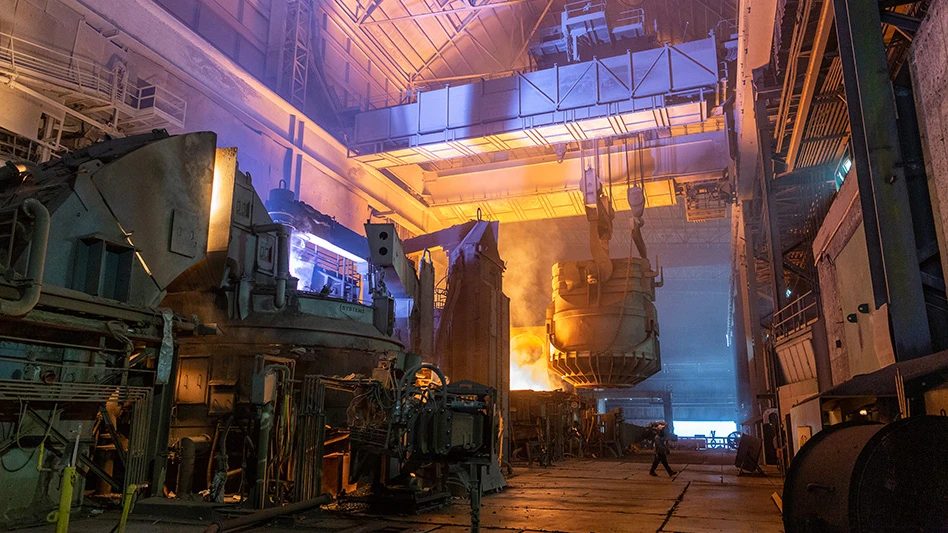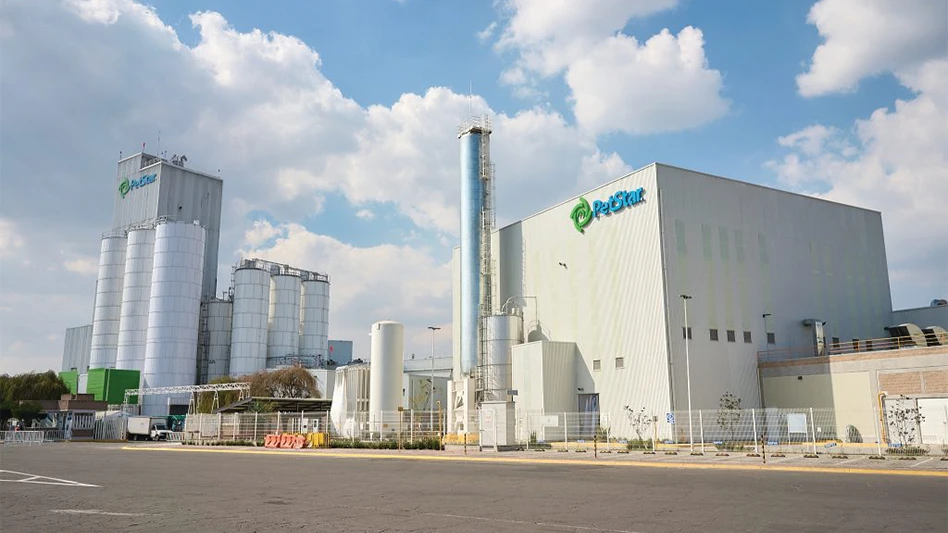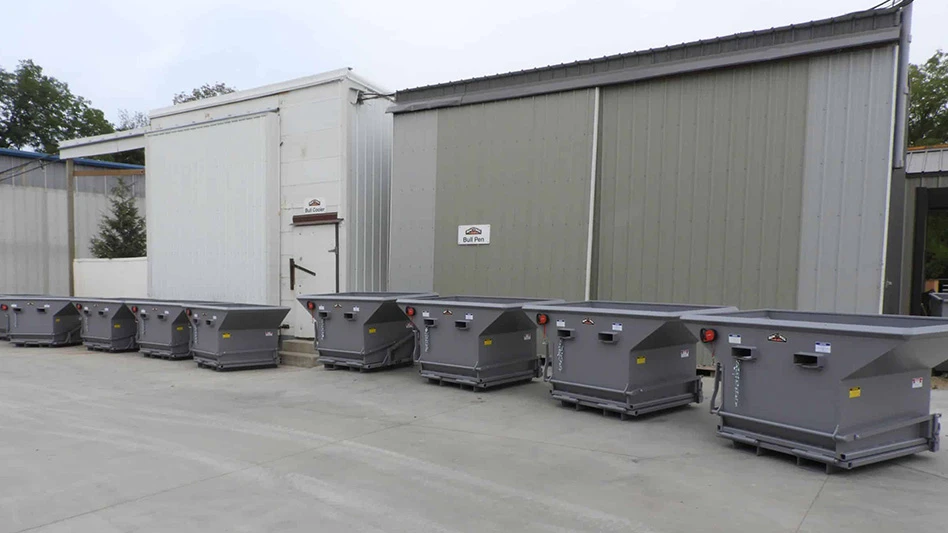It could not be considered a record-breaking show in terms of attendance or exhibit space, but the 1999 Annual Convention of the Institute of Scrap Recycling Industries Inc. (ISRI) was noteworthy nonetheless.
The convention and exposition, which took place at the Marriott World Center in Orlando, Fla., from April 13 to 17, drew some 2,300 attendees—down significantly from last year’s 3,000+ attendance figure.
The drop was hardly surprising considering the turbulence the scrap market experienced in the second half of 1998, with commodity prices plummeting and facilities shutting down throughout North America.
The timing of the ISRI Convention, fortunately, coincided with signs of hope in most scrap recycling segments, giving the gathering a tone of relief and optimism it may not have possessed if it had been held just a month or two earlier.
A HINT OF BULLISHNESS
ISRI members who trade in ferrous scrap certainly came with their own opinions about where the market was headed. Nonetheless, any signs of assurance that the worst was over must certainly have been appreciated.
An investment analyst who tracks the steel industry told ISRI members he was encouraged by Wall Street’s recent surge of interest in steel company stocks. Steel industry stocks had a particularly good run in early April, noted Robert Winters, a managing director with Bear Stearns, New York. He described their gains during that stretch as “stunning” or “Internet-like.”
Winters pointed to what he called an “unbelievable level of demand” in the U.S. for motor vehicles and appliances as one factor in the rally. The end market consumption of steel was up 7% in the U.S. in 1998, according to Winters. The fact that trade cases have been aggressively filed against the nations that swamped with U.S. with steel imports may have also favored the stocks of American steelmakers, Winters added.
He noted that the “collapse of export markets” was one of several factors leading to the drop in ferrous scrap prices in 1998. Winters added the decline of U.S. steel mill output and the increased market share of DRI and other scrap substitutes as additional factors.
For 1999, Winters believes some semblance of Asian economic recovery would provide the boost needed to help ferrous scrap pricing. The long-term prospect for scrap remains healthy, in Winters’ opinion, due to the continuing march of electric arc furnace (EAF) steelmakers in capturing market share. “EAF steelmakers are now producing 44% to 45% of steel made in the U.S.,” Winters remarked, “and that growth trend, in my opinion, is going to continue.”
Will a healthy steel industry mean better times ahead for scrap processors? Jamie Held, a vice president-marketing for Metal Management Inc., who works out of the firm’s Houston office, predicted that an overall increase in North American steel production would indeed lift ferrous scrap prices later in 1999. “We feel the increase in steelmaking capacity should be felt in the third and fourth quarters,” said Held. “The largest increases should come in the third quarter, with fourth quarter increases being more modest. We feel the industry will regain a large percentage of what was lost in 1998.”
If domestic steelmaking production capacity can bump up from its current 83% to the higher 80s—and more importantly if the U.S. continues to avoid dipping into a recession—that could make the difference in demand that ferrous scrap processors need, says Held.
Investment analyst Paul M. Higbee is a managing director of BT Alex Brown Inc., New York, who tracks publicly-traded scrap processing companies. He told attendees that “$90 is too low for the equilibrium level” of the scrap supply and demand situation. “It will go up,” he said of the price of ferrous scrap.
Some processors in attendance were skeptical, with one asking Higbee why prices would move upward with, in this processor’s estimate, some “nine million tons of inventory” piled up.
On the nonferrous side, the ISRI Convention coincided with some of the first price increases seen in the copper and aluminum markets in some time. But, according to presenters, they may well have been based on moves by speculators, rather than fundamental improvements in the supply-demand situations of either copper or aluminum.
Speakers at the ISRI Focus on Copper noted that production of mined copper has continued to rise despite a paltry increase in demand and low prices worldwide.
James Steel, a researcher at Refco Inc., New York, believes the LME price of copper could slip to around 60 cents unless there are significant cuts in copper production. Substantial production cuts could help the LME price of copper hover closer to 70 or 72 cents.
Both Steel and Joseph Robertson of MG Metal & Commodity Corp., New York, expressed doubts that overall demand for copper was likely to escalate. Steel noted that demand for copper was up just 1% in the first quarter of 1999 compared to a year ago, while Robertson noted that even production cutbacks would only confirm that the copper demand situation was relatively stagnant.
Michael Newman of Alusuisse Aluminum America Inc., Fair Lawn, N.J., was one of those who felt that speculators may have been the responsible for aluminum’s improved fortunes. He said the early April price run-up was “due largely to trading mentality” rather than because of fundamental changes in the market.
Parks Dodd of Aluminomics LLC, Knoxville, Tenn., believes the current slowdown in global economic growth is the predominant factor influencing commodities prices. “The trend in world economic growth is for 3% annual growth,” Dodd said. “Right now, it is at a 1.5% growth pace.” He noted that Japan was actually experiencing negative growth at –1%. He added cynically that many forecasters “have been saying that Japan will pick up in six months for well over the last six months.”
Dodd sees “no respite from Russian metals exporting in sight,” though he says that optimists can hope that China will begin absorbing more of that metal, possibly helping out western economies.
He sees the aluminum oversupply situation of 700,000 tons finally receding, with more than 300,000 tons on hand in 2001, and with further decreases in supply in 2002 and 2003.
Dodd believes the auto and truck markets will continue to demand more aluminum, with 4% annual increases of aluminum consumed by vehicle makers in the years 2000 through 2003. Newman was not as certain of that, believing that affordable “ultralight steel will compete well against aluminum in the primary market.”
But Dodd says, “the key is going to be the space frame and more penetration of the body panel market. I think you’ll see aluminum in cars topping 300 pounds or even 350 pounds per car.”
Dodd was brave enough to forecast LME pricing over the next few years, projecting a 56 cents per pound average price in 1999, rising to 58 cents in 2000, 63 cents in 2001, 70 cents in 2002 and hitting 80 cents per pound in 2003.
EQUIPMENT MAKERS AWAIT THE REBOUND
Markets in many segments beyond ferrous scrap had been depressed for some time heading into late 1998. In many cases, makers of equipment to process recycled commodities such as paper, plastic, tires and some nonferrous metals had already been selling into stagnant and depressed markets. When the ferrous plunge hit, the last healthy market slowed down its spending habits as well.
For many exhibitors at ISRI, the show marked a chance to renew interest in equipment purchasing decisions among attendees. A drastic reduction in—or even an absence of—orders hit many recycling equipment makers in the third and fourth quarters of 1998 and the first quarter of 1999.
While leads garnered on the floor and transactions completed in the lobby, for many companies, fell short of activity in some prior shows, many were nonetheless encouraged by the presence of activity in a market that looked down for the count a month or two earlier.
Makers of mobile material handling equipment, meanwhile, may have been suffering “trade show fatigue” by the time the ISRI Annual Convention wrapped up.
In March, many heavy equipment makers had already exhibited at the National Association of Demolition Contractors convention in Las Vegas as well as at the colossal CONEXPO/CON-AGG show, which was also held in Las Vegas in March.
There is no way to predict where scrap markets will stand when ISRI members meet for the next Annual Convention, in Las Vegas from March 12-16, 2000. But many processors and equipment manufacturers expressed the belief that conditions will almost certainly be more favorable in the months leading up to the 2000 Convention than they were for this year’s.
Hopefully, the rebound that began just as ISRI members met in the Florida sunshine will prove to be a lasting one that will increase the ability and desire of scrap market participants to gather en masse next year along Las Vegas Boulevard.
The author is editor of Recycling Today.

Explore the June 1999 Issue
Check out more from this issue and find your next story to read.
Latest from Recycling Today
- Autocar releases Smart Battery Cable to advance refuse truck fire safety
- PLASTICS launches Positives of Plastics website
- Impact Air Systems launches compact ZAC400
- PCA to shut down paper machines at Washington containerboard mill
- BMRA provides landfill guidance for UK shredder operators
- Fornnax high-capacity tire recycling plant
- EU introduces measures to secure raw materials, strengthen economic security
- US Steel to restart Illinois blast furnace





